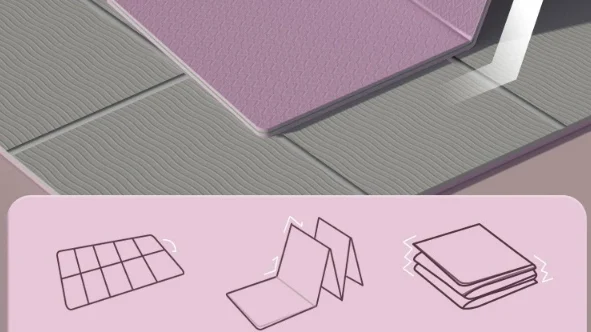The Ultimate Guide to TPE Yoga Mats: Benefits and Comparisons
Yoga practitioners today are increasingly turning to TPE (Thermoplastic Elastomer) yoga mats for their practice. These mats offer a blend of advanced technology, superior performance, and eco-friendliness that make them stand out in the crowded yoga mat market. In this comprehensive guide, we explore the innovative technology behind TPE mats, compare them to EVA mats for performance, and highlight why TPE mats are the smart choice for yogis of all levels.
The Innovative Technology Behind TPE Mats
TPE yoga mats are crafted using a unique blend of materials that combine the durability of plastic with the flexibility of rubber. This innovative thermoplastic elastomer not only provides excellent cushioning and support but also boasts remarkable elasticity, allowing it to retain its shape and integrity even after prolonged use. Unlike traditional PVC mats, TPE mats are free from harmful chemicals like phthalates and heavy metals, making them safer for both the environment and the practitioner.
EVA vs. TPE: Which Mat Offers Better Performance?
When comparing EVA (Ethylene Vinyl Acetate) mats to TPE mats, several key performance factors come into play:
Comfort and Support
TPE mats are celebrated for their exceptional comfort and support. The material’s elasticity ensures that it conforms to the body’s contours, providing a comfortable yet stable surface for yoga poses. In contrast, while EVA mats offer decent cushioning, they may not provide the same level of support over time, especially for practitioners who require more robust cushioning during their practice.
Durability and Longevity
TPE mats are designed to withstand the rigors of regular yoga practice. They are resistant to tearing and degradation, maintaining their structural integrity even with frequent use. EVA mats, although durable, may show signs of wear and tear quicker than TPE mats, particularly in high-impact practices like Ashtanga or Power Yoga.
Eco-Friendliness and Sustainability
One of the standout features of TPE mats is their eco-friendliness. They are often made from recycled materials and are biodegradable, reducing their environmental impact significantly. On the other hand, EVA mats, while generally recyclable, may not offer the same level of sustainability as TPE mats due to their production processes and material composition.
TPE Mats: The Smart Choice for Yogis of All Levels
Whether you’re a beginner or an experienced yogi, choosing a TPE mat can offer numerous advantages:
• Versatility: TPE mats are suitable for various yoga styles, from gentle Hatha yoga to vigorous Vinyasa flow.
• Grip and Traction: TPE mats provide excellent grip, even during sweaty sessions, helping to prevent slips and injuries.
• Easy Maintenance: These mats are easy to clean and maintain, requiring simple wiping down after each use.
• Affordability: While initially slightly more expensive than EVA mats, the long-term durability and performance of TPE mats make them a cost-effective investment.
In conclusion, TPE yoga mats represent a significant evolution in yoga equipment, combining cutting-edge technology with environmental responsibility. Whether you prioritize comfort, durability, or sustainability, TPE mats emerge as the preferred choice for yogis looking to enhance their practice while minimizing their ecologic
Explore, customize, purchase, and wholesale TPE Yoga Mats products.
FAQ (Frequently Asked Questions)
1. Are TPE yoga mats environmentally friendly?
TPE mats are often made from recycled materials and are biodegradable, making them a sustainable choice compared to traditional PVC mats.
2. Do TPE mats provide good grip?
Yes, TPE mats offer excellent grip and traction, even during sweaty yoga sessions, which helps prevent slipping and enhances stability.
3. How do TPE mats compare to EVA mats in terms of durability?
TPE mats are known for their durability and resilience, maintaining their shape and integrity over time better than EVA mats, especially in high-impact practices.
4. Are TPE mats easy to clean?
Yes, TPE mats are easy to maintain. They can be cleaned with a simple wipe-down using water and mild soap after each use.
5. Are TPE mats suitable for all yoga styles?
Absolutely! TPE mats are versatile and suitable for various yoga styles, from gentle Yin yoga to dynamic Power yoga.
